In addition to Angelis Kosmopoulos who was among other things famous for his beard and fustanella, there was another Greek foreman who played an important part in the early excavations of the DAI.
However, his legacy is not nearly as conspicuous to outsiders and thus he remains far less well-known today: his name is Georgios Paraskevopoulos. He is not, however, unknown in connection with the research history of German archeology in Greece in the broadest sense.
Klaus Herrmann, for example, has determined that Paraskevopoulos became involved with archeology by way of the German excavations in Olympia. The information about the old Olympia excavation derives from the collection of material about Wilhelm Dörpfeld and the excavation history of Olympia, which Herrmann compiled in exacting detail over the years and which today rests in the archive of the DAI Athens as the ‘Nachlass Klaus Herrmann’ (i.e. the ‘Klaus Herrmann papers’).
As early as 1877/1878 – during Dörpfelds first campaign on-site, the third of the excavation – Paraskevopoulos appears in the diaries kept during the old excavation as a careful worker who was promoted to foreman (Herrmann 2007, 28). According to Tagebuch V from the following year, 1879/1880, Paraskevopoulos oversaw two carts and 75 workers along the south wall of the stadium. When money became tight during the sixth campaign, he was the only foreman who was retained.
In 1882, probably on Dörpfeld’s recommendation, Heinrich Schliemann hired Paraskevopoulos as a foreman for his sixth campaign in Troy, since he had proven himself at the excavations in Olympia. Schliemann writes about Paraskevopoulos in his characteristic style: “[…] the other one, from Pyrgos, named Georgios Paraskevopulos, was now christened ’Laomedon’. Owing to his gigantic physique and herculean musculature, which filled my workers with dread and inspired them with blind obedience, the latter was highly useful to me” (Schliemann 1884, 6).
Peter Goessler, who had met Paraskvopoulos personally at the excavations on Leucas, also describes him in his well-known biography of Dörpfeld as a “giant in body and strength” (Goessler 1951, 32).
Since no known photograph of Paraskevopoulos has been identified with certainty, Uta Dirschedl (Dirschedl 2012, 487 Kat. 10 I 68 and fig. on p. 128) and Michaela Zavadil (Zavadil 2016, 272 with fig. 4) have tentatively identified him in light of accounts of his size as the person next to Dörpfeld at the center of a photograph of the western pediment of the temple of Zeus in Olympia (fig. 1).
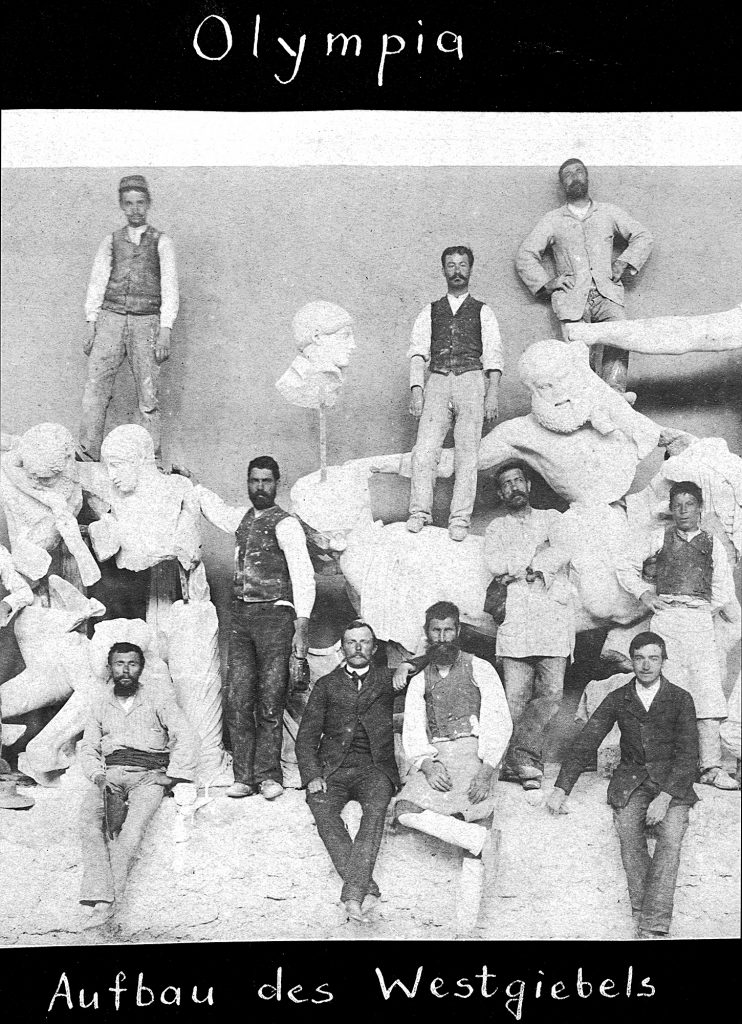
Before we concern ourselves further with the question of photographs of Paraskevopoulos, however, let us first examine how he helped the activities of the Athens institute, which we can follow easily enough. In addition to notices in the published excavation reports, original documents in the Athens archive, which are currently being surveyed and digitalized by the ARCHAthen project sponsored by the Deutsche Forschungsgemeinschaft, present us with sporadic information: in the first place, there are the account books of the branch from 1874 to 1913, which derive in part from the Pergamon excavation directed by the branch from 1901 to 1913, and then also the excavation diaries of various other projects.
The first excavations in Olympia came to an end in 1881. Over the following years, the publications were prepared and, from 1883 to 1885, the museum was built (Stolze 2000, 12); the installation of the exhibits then followed. It is not hard to imagine that foremen and overseers were hired to manage the workers, and it is plausible that Paraskevopoulos was among them, although this could only be proven by the photograph shown above (fig. 1).
Beginning in 1894, Paraskevopoulos is occasionally mentioned as a foreman in the diaries for the excavation of Dörpfeld’s “Enneakrunos” (fig. 2) in the immediate vicinity of the Athenian acropolis.
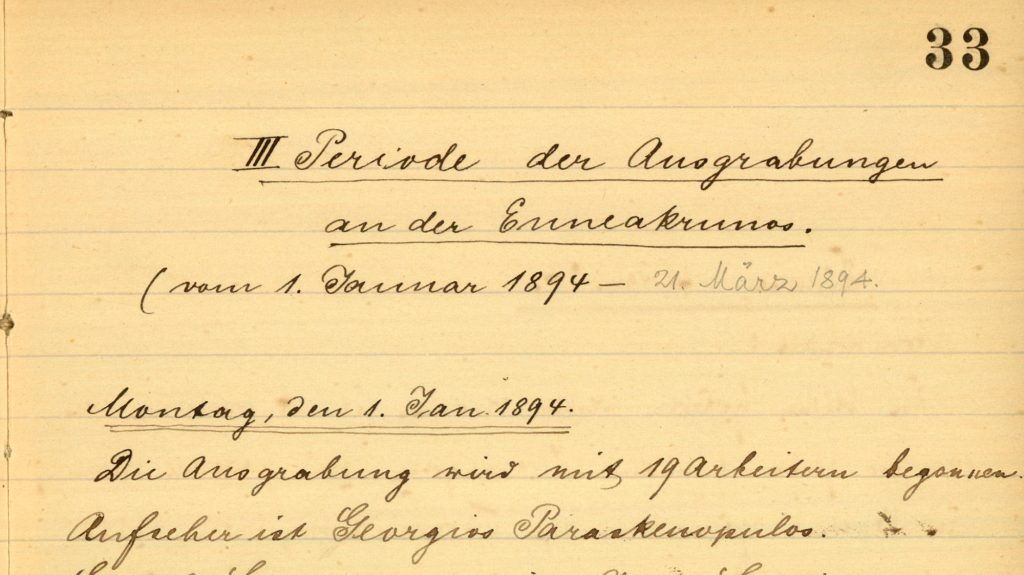
In 1899–1900, Paraskevopoulos was on the payroll for alterations to the garden in connection with the construction of the library. Over the following years, from 1899 to 1914, we can trace his involvement in numerous projects (fig. 3) of the Institute (usually under Dörpfeld’s aegis) or in Dörpfeld’s excavations which were financed by third parties (usually private donors).
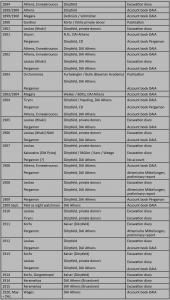
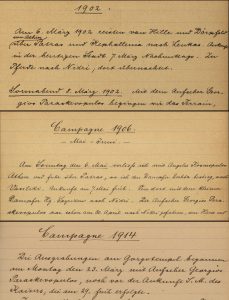
Although for several months every year for at least fifteen years Paraskevopoulos was involved in the projects undertaken by the Institute and Dörpfeld, of which there are thousands of surviving photographs, there is no reference to a picture of him in the records of the Athens branch.
A single photograph with an identifying note, however, is preserved in the Dörpfeld papers in the municipal archive of Wuppertal:
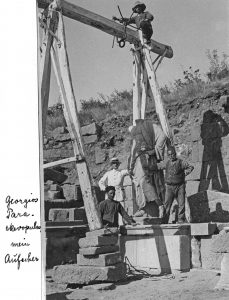
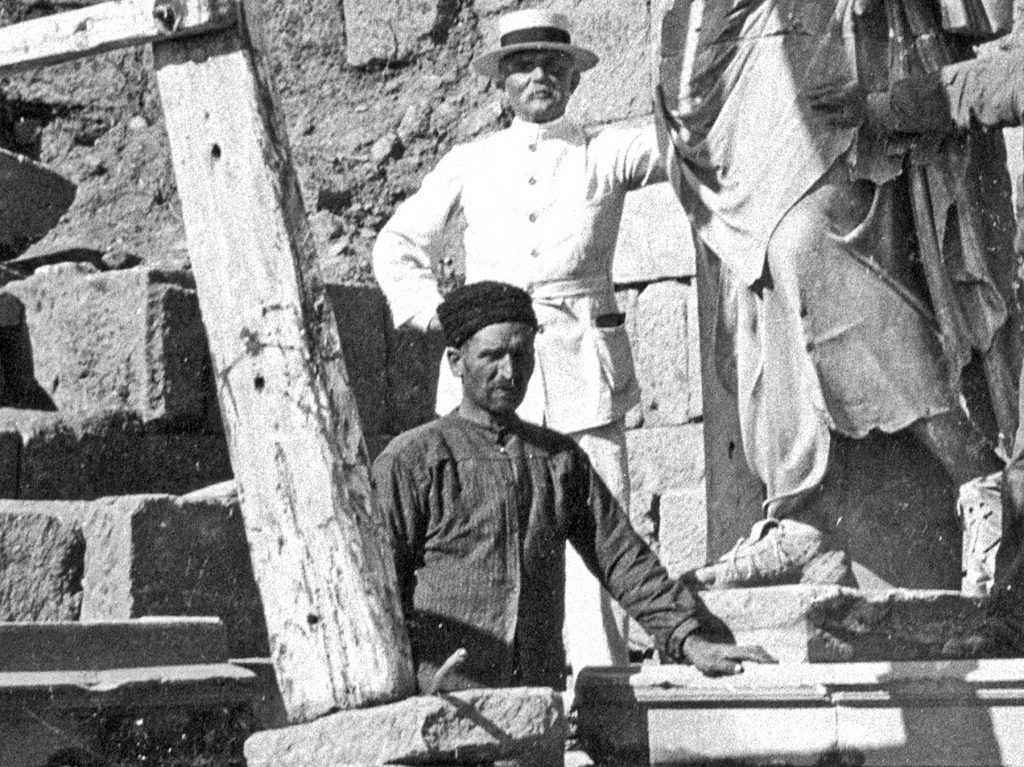
This photograph tells us relatively little, though, and it also does not really evoke the Paraskevopoulos the “giant in body and strength”.
A search for photographs that were taken during the campaigns in which Paraskevopoulos is recorded to have participated, and which must show him at a somewhat advanced age, resulted in the discovery of an entry in the excavation diary of Kakovatos from 1907 (fig. 7) and a corresponding photograph taken in the same year.
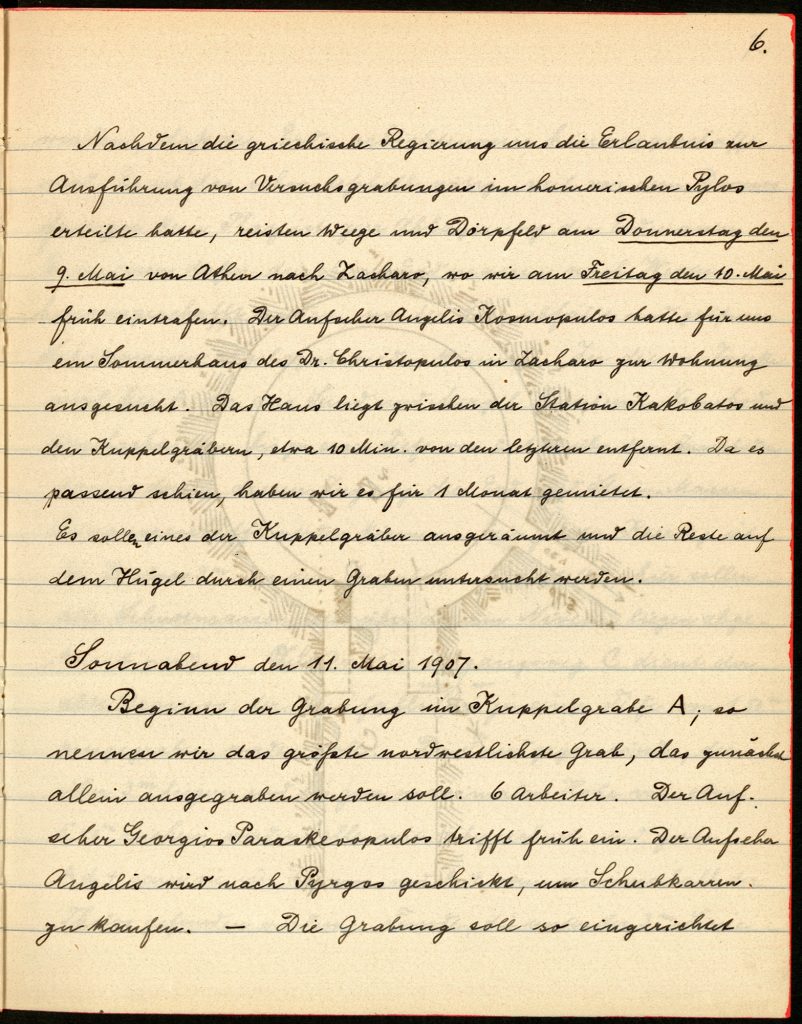
The man depicted in the photograph (fig. 8) bears such a strong resemblance to the man in the photograph from Pergamon (fig. 6) that his identification as Paraskevopoulos may be considered certain.
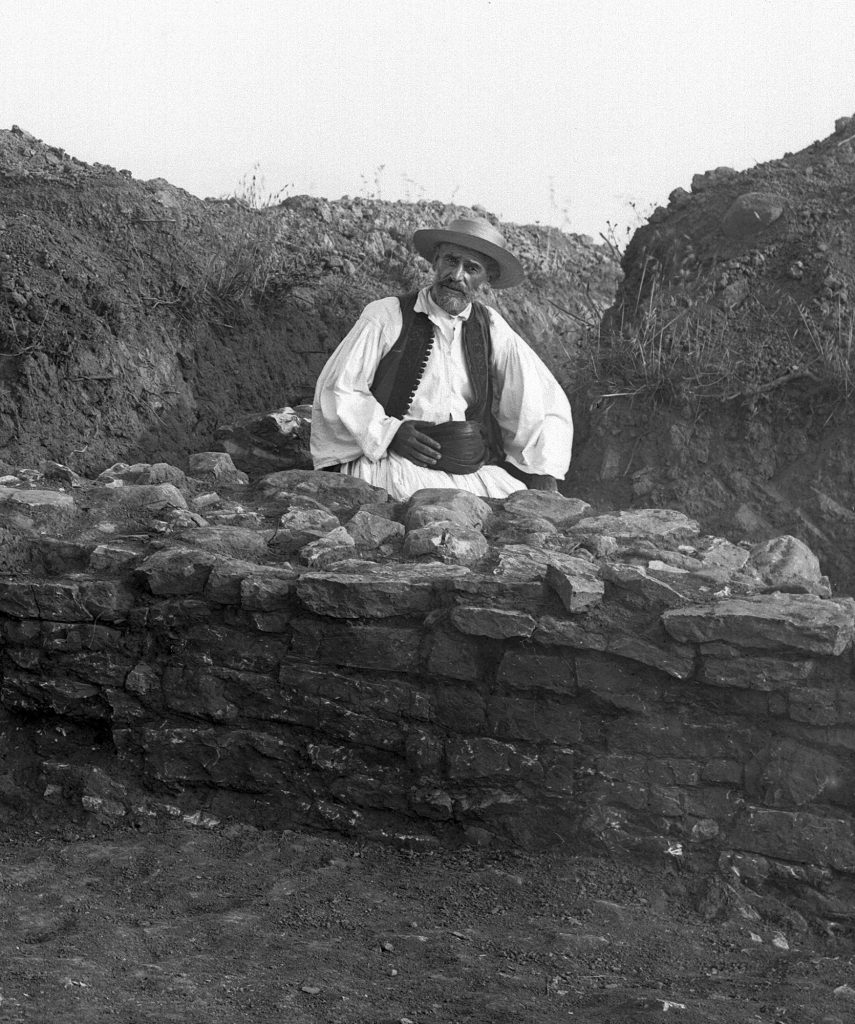
Since this picture from Kakovatos gives us a much clearer idea of Paraskevopoulos’s appearance, it was possible to identify him on a series of pictures taken in May 1888 at Olympia.
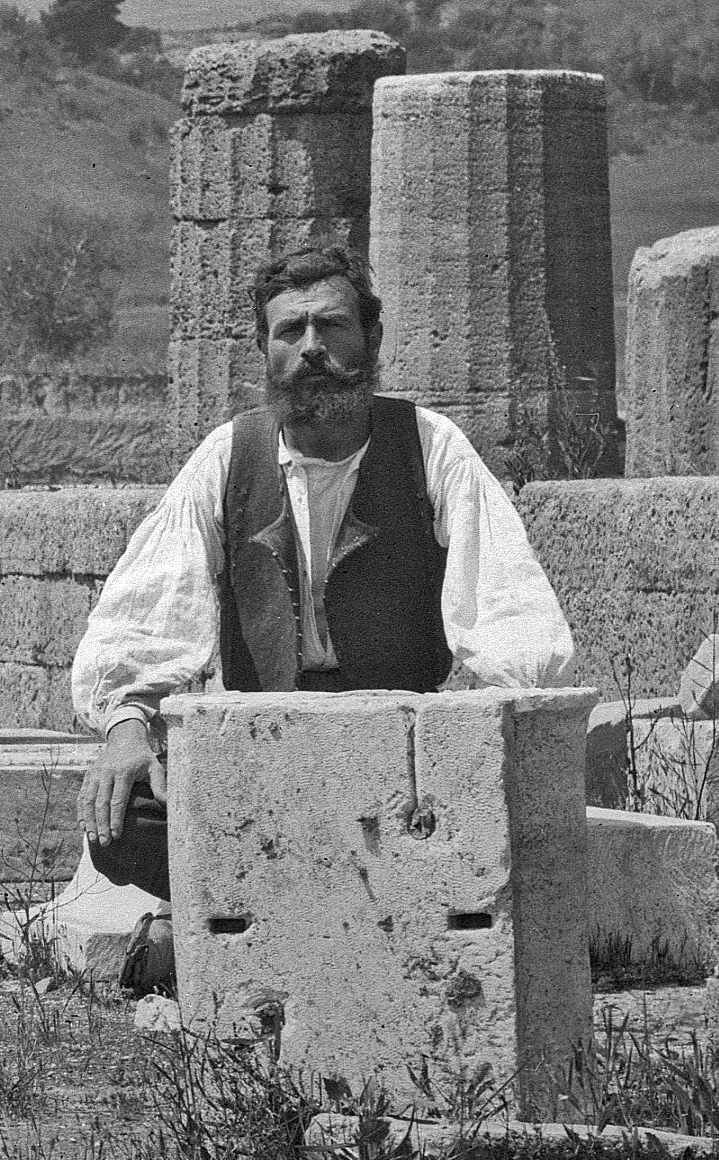
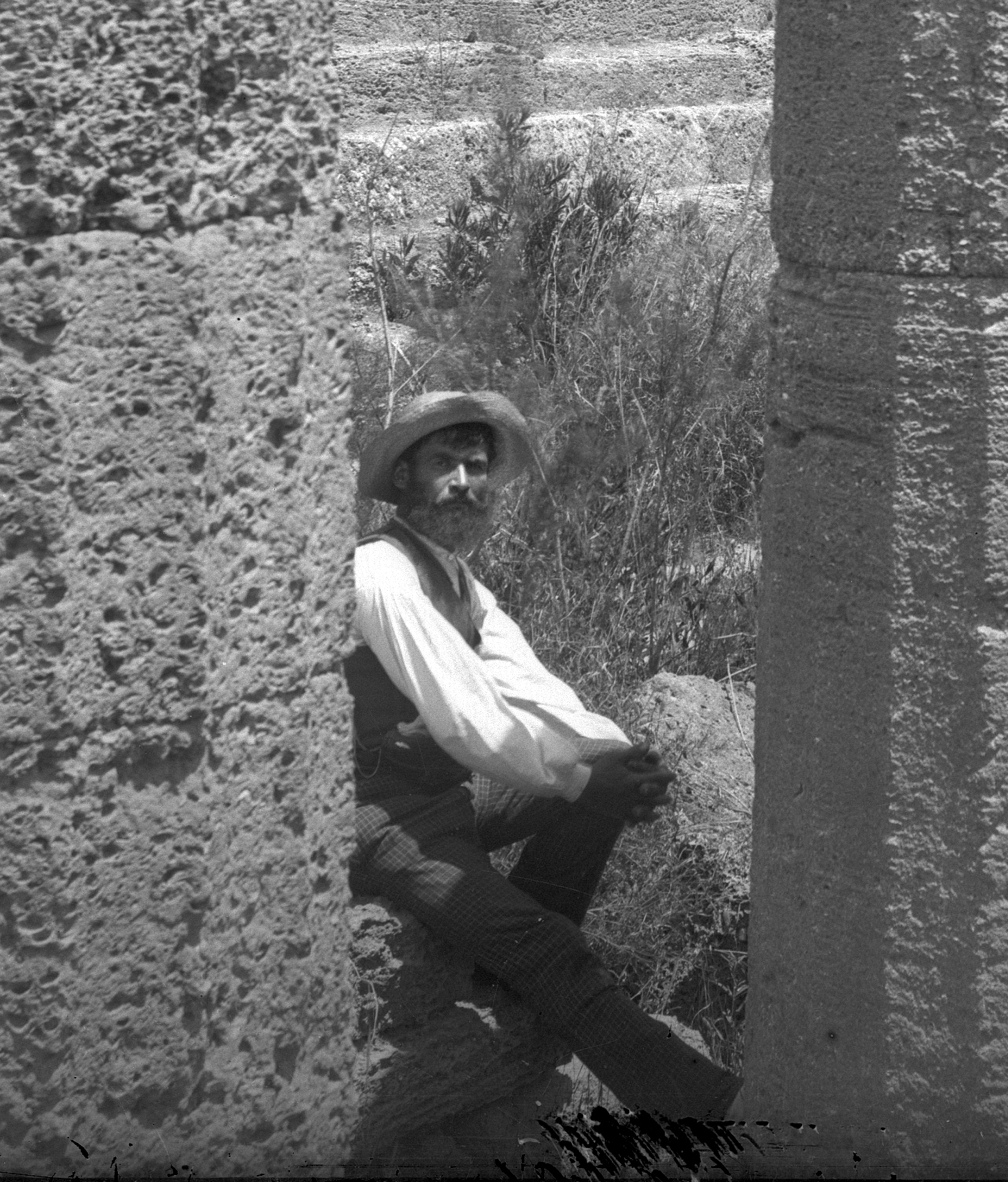
These pictures give a better impression of his unusual size. They seem to confirm Dierschedl’s and Zavadil’s identification of Paraskevopoulos with the man in the picture from Olympia (fig. 1), even if his facial features cannot clearly be seen in the photograph.
The fact that Dörpfeld brought Paraskevopoulos along to all of his excavations suggests that he thought very highly of the Greek. He also received the Medal of the Crown Order from the Kaiser in 1900 in appreciation of his services (fig. 11).
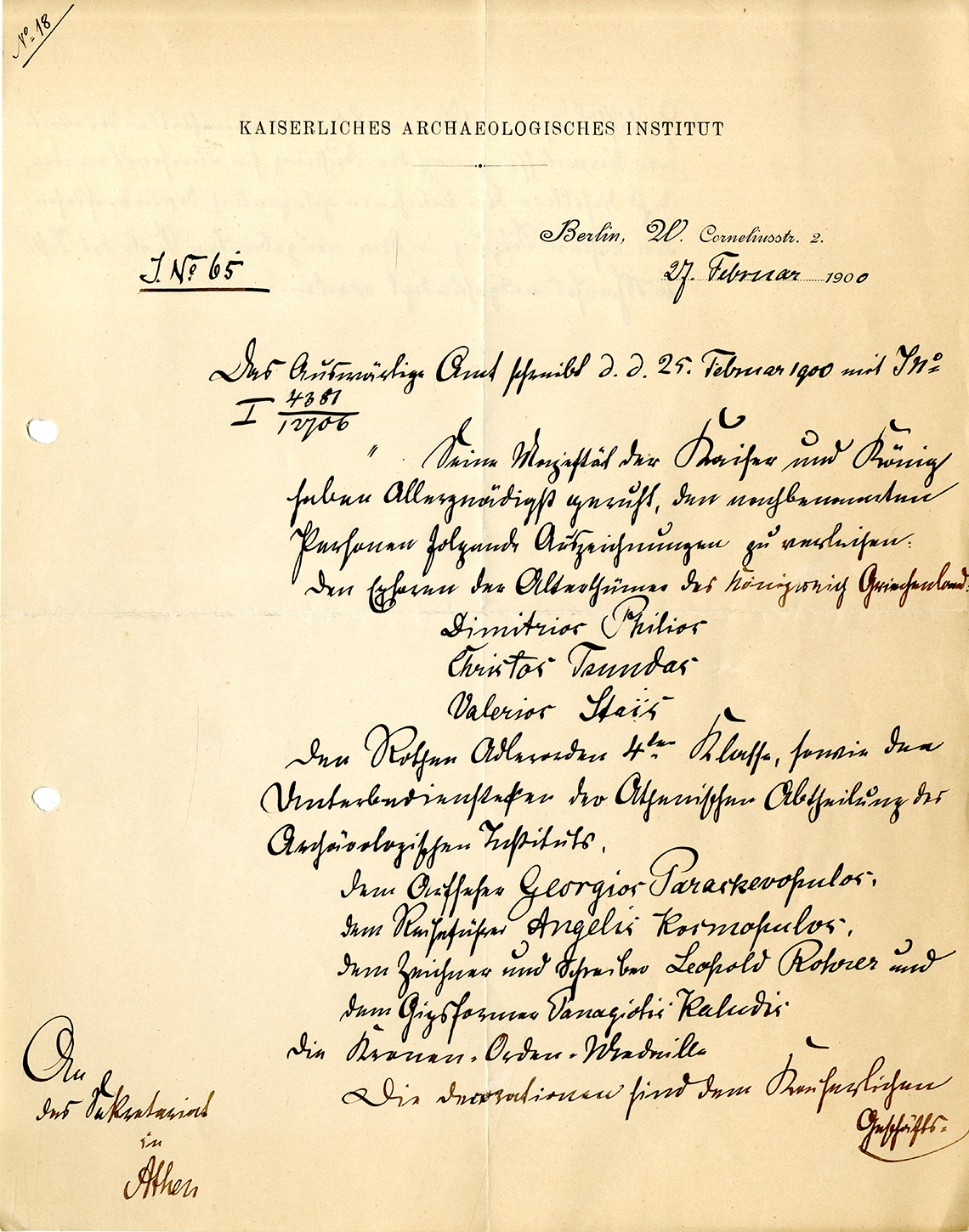
Little is known about Paraskevopoulos’s life outside the Institute. We have no information about his private circumstances nor do we know his date of death. In the cash accounts book of the Athens branch, however, in which secretary Franz Studniczka compiled the expenses of the Institute immediately after the conclusion of World War I, an entry records the payment of wages to one Paraskevopoulos for the months May to December in 1920. The man in question is presumably none other than the reliable old Georgios. His trail goes cold thereafter.
Lastly, we may well wonder how responsibilities were shared when both Angelis, whose role as supervisor at Dörpfeld’s excavations we previously discussed, and Georgios worked together at an excavation. The first entry in the excavation diary from Kakovatos (fig. 7), from 1907, is especially instructive in that regard.
Angelis Kosmopoulos arranged for lodgings and was sent to Pyrgos to buy pushcarts. Georgios Paraskevopoulos apparently supervised the six workers on site. Angelis was employed for off-site errands, while Georgios took care of things at the excavation site itself. In their different ways, both men were irreplaceable pillars for Institute’s endeavors.
Cited works:
U. Dirschedl, Die Erforschung Olympias – Die ‘alten’ Grabungen im 19. Jahrhundert, in: Heilmeyer u. a. (Hrsg.), Mythos Olympia: Kult und Spiele (Munich 2012)
P. Goessler, Wilhelm Dörpfeld – Ein Leben im Dienst der Antike (Stuttgart 1951)
K. Herrmann, ‘Wer nie Pilaf mit Unschlitt aß …’. Das alte Grabungshaus in Olympia und seine Bewohner, in: H. von Steuben et al. (eds.), Beiträge zur antiken Plastik – Festschrift zu Ehren von Peter Cornelis Bol (Möhnesee 2007) 13 – 40
Schliemann, Troja: Ergebnisse meiner neusten Ausgrabungen auf der Baustelle von Troja, in den Heldengräbern, Bunarbaschi und anderen Orten der Troas im Jahre 1882 (Leipzig 1884)
W. Stolze (ed.), Olympia – 125 Jahre Ausgrabungen der Berliner Museen in Olympia (Berlin 2000)
M. Zavadil, Verwobene Netzwerke – Wissenschaft und Personalakquise bei Heinrich Schliemann, in: K. R. Krier – I. Friedmann (eds.), Netzwerke der Altertumswissenschaften im 19. Jahrhundert – Beiträge der Tagung vom 30.–31. Mai 2014 an der Universität Wien (Vienna 2016) 267–280.
